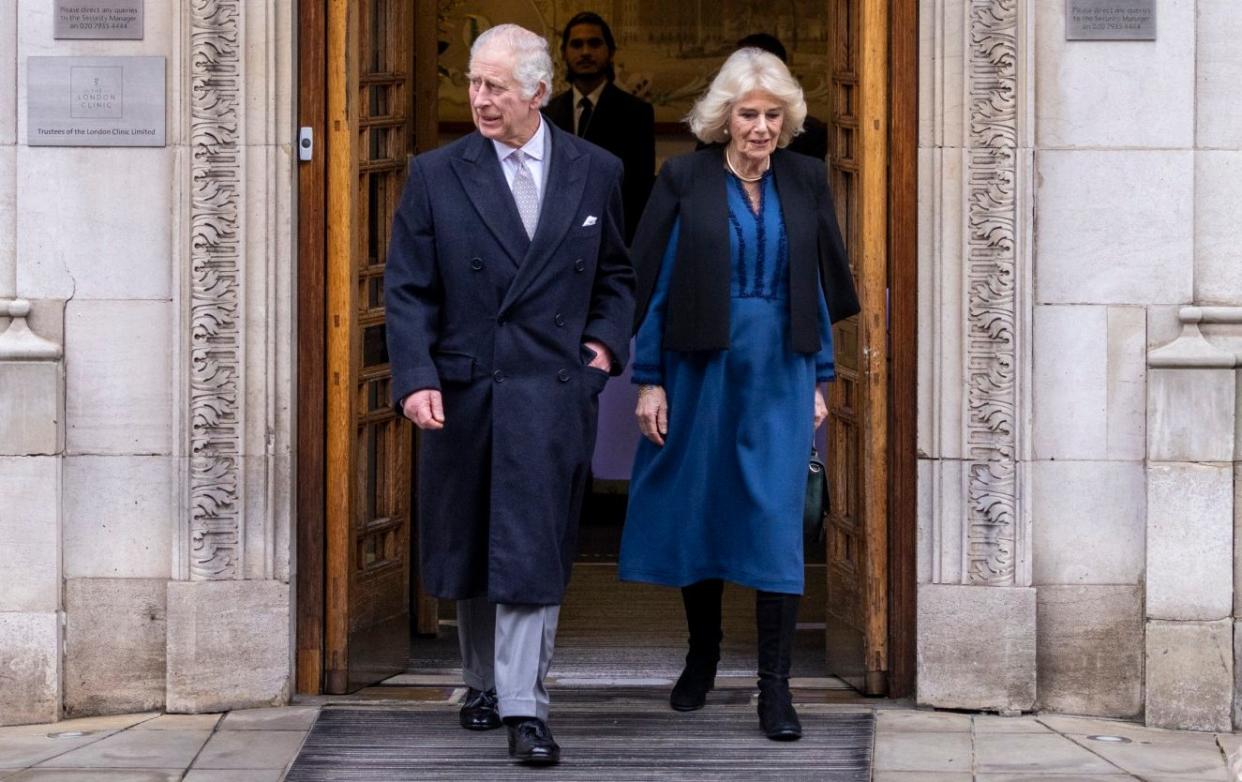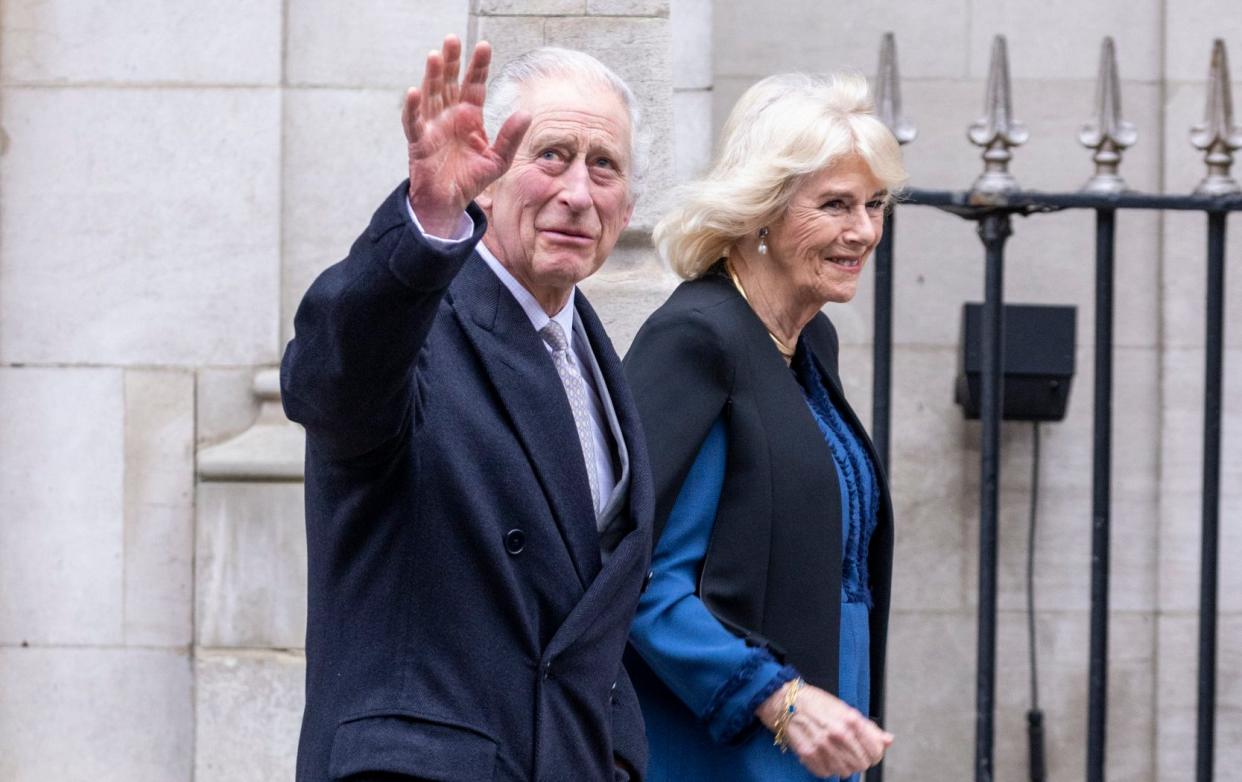King Charles takes first positive step in long journey to cancer recovery

It is less than 12 weeks since Buckingham Palace announced that the King had been diagnosed with a form of cancer and begun treatment.
Details have been scant. The Palace has been at pains not to reveal what kind of cancer the King has, saying only that it was discovered during his treatment for an enlarged prostate.
In a statement on Friday, the Palace said that doctors were so “sufficiently pleased with the progress made so far” that the King was able to resume his public role.
However, treatment continues. The Palace said it was “too early to say” how long this will continue, but that His Majesty’s medical team are “very encouraged by the progress made so far and remain positive about The King’s continued recovery”.
Even once the King’s treatment is over, recovery from cancer is a waiting game.

Cancer Research UK notes: “For most people who are in this situation, each day lowers the risk of a recurrence. Most cancers that are going to come back will do so in the first two years or so after treatment. After five years, you are even less likely to get a recurrence. For some types of cancer, after 10 years your doctor might say that you are cured.”
For now, the King may be glad to see the back of a rather testing winter, returning to a more public role as spring gives way to summer.
The past four months have seen the King in and out of hospital, starting with a three-night stay at the London Clinic for a “corrective procedure” to treat an enlarged prostate, during which medics identified the “separate issue of concern” which was later diagnosed as cancer.
In February, he began the schedule of regular treatments as a hospital outpatient.
At 75, the King has enjoyed years of robust health, keeping active with hill-walking and gardening, and a largely organic diet.
While the last few months are likely to have taken their toll, this residual fitness could help to boost his recovery.
The Queen has spoken of her husband’s fitness before, during the pandemic, telling the BBC: “He is probably the fittest man of his age I know. He’ll walk and walk and walk. He’s like a mountain goat, he leaves everybody miles behind”.
In recent years, the NHS has begun rolling out “prehab” exercises for cancer patients, with evidence that good fitness levels before starting treatment can help to “prime” the body’s responses to treatment, and speed up the return to health.
However, there is no doubt that this remains an anxious time for the King and those around him.
While the positive update from the Palace will fuel hopes that a future update will confirm the King’s treatment has been completed, even then his recovery will be a journey which can only be taken one day at a time.
For all the bombastic talk of cancer being “cured”, or of being given “the all-clear”, the truth is that for many of those diagnosed with the disease the journey that follows can be slow and uncertain.
Doctors will typically say patients are in remission when signs of their cancer have disappeared.
If traces have reduced to a significant extent, they may speak of “partial remission”.
But most oncologists are reluctant to use the language of cure unless a patient remains in complete remission for five years, with some drawing the line at 10.
Cancer can recur if the original treatment did not eradicate all the cancer cells, and those left behind grow into a new tumour – or if some cells have spread elsewhere in the body, and begun to form a new growth.
Risks vary for different cancers, and the stage at which they are caught.
Overall, the risk of developing cancer increases with age and more people receive a diagnosis during their 70s than in any other decade.
Prostate cancer is the most common type of cancer in men aged 75 and over, but the Palace confirmed that the monarch did not have the condition.

Lung cancer is the second most common, accounting for 16 per cent of cancers in those aged 75 and older. While smoking is the leading cause of lung cancer, the King has not smoked since trying cigarettes as a schoolboy.
For bowel cancer – the third most common form of cancer in men aged 75 and over – experts say that if disease is to return it is most likely within three to five years of diagnosis.
Bladder cancer is the fourth most common type in his age group. Symptoms are similar to that of an enlarged prostate, or prostate cancer, which includes a frequent need to urinate, a burning sensation and blood in the urine. Recurrence rates for bladder cancer can be quite high compared with other types of cancer, with around half of those who develop the disease likely to require further treatment.
However, across almost all cancers, survival is improving.
While one in two people in the UK can expect to develop cancer in their lifetime, most of those newly diagnosed will survive for at least 10 years.
Back in February, the palace said that the King had chosen to share the news of his cancer diagnosis in order to “assist public understanding” of the disease.
Since then, charities and NHS websites have paid tribute to His Majesty, saying his openness has encouraged others to come forward for checks, in a shift which promises to save lives.
On Tuesday, the King will mark his return to public life with a carefully chosen first engagement – to a cancer treatment centre, where he will meet patients and medical specialists.
The joint visit with the Queen signals not just his gratitude to the medical profession, but his determination to shine a light on the journey which millions of cancer patients must navigate.



